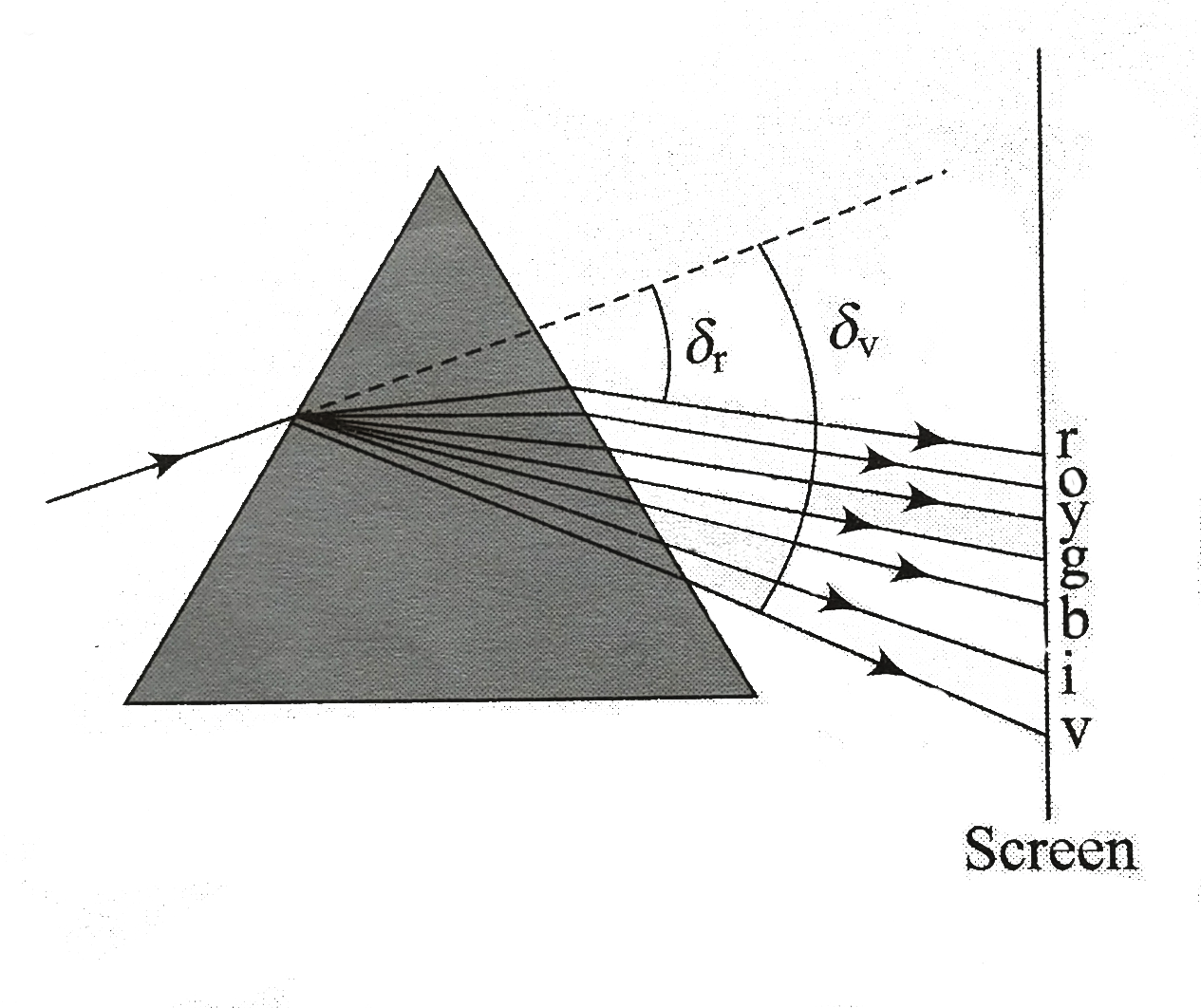A glass prism of angle gives minimum angle of deviation with the maximum error of when a beam of parallel light passed through the prism during an experiment. Find the permissible error in the measurement of refractive index of the material of the prism.
The correct Answer is:
To find the permissible error in the measurement of the refractive index μ of the material of the prism, we will follow these steps:
Step 1: Identify Given Values
- Angle of the prism A=60∘
- Minimum angle of deviation θ=30∘
- Maximum error in angle of deviation Δθ=1∘
Step 2: Calculate the Angle of Incidence
The angle of incidence i can be calculated using the formula:
i=A+θ2
Substituting the values:
i=60∘+30∘2=90∘2=45∘
Step 3: Use the Formula for Refractive Index
The refractive index μ can be calculated using the formula:
sini=μsin(A2)
Substituting i=45∘ and A=60∘:
sin(45∘)=μsin(30∘)
We know that sin(45∘)=1√2 and sin(30∘)=12:
1√2=μ⋅12
Solving for μ:
μ=2√2=√2
Step 4: Differentiate to Find Δμ
To find the permissible error in the refractive index Δμ, we differentiate the equation:
μ=sin(i)sin(A2)
Using the chain rule, we have:
Δμ=csc(A2)⋅cos(i)⋅Δθ2
Substituting A=60∘ and i=45∘:
Δμ=csc(30∘)⋅cos(45∘)⋅Δθ2
We know that csc(30∘)=2 and cos(45∘)=1√2:
Δμ=2⋅1√2⋅1∘2
Converting 1∘ to radians:
1∘=π180
Thus,
Δμ=2⋅1√2⋅π/1802=π180√2
Step 5: Calculate the Percentage Error
The percentage error in the measurement of refractive index μ is given by:
Percentage Error=Δμμ×100
Substituting μ=√2:
Percentage Error=π180√2√2×100=π180×100
This simplifies to:
Percentage Error=100π180=5π9%
Final Answer
The permissible error in the measurement of the refractive index μ of the material of the prism is:
5π9% (approximately 17.5\%)
- Angle of the prism A=60∘
- Minimum angle of deviation θ=30∘
- Maximum error in angle of deviation Δθ=1∘
The angle of incidence i can be calculated using the formula:
i=A+θ2
Substituting the values:
i=60∘+30∘2=90∘2=45∘
The refractive index μ can be calculated using the formula:
sini=μsin(A2)
Substituting i=45∘ and A=60∘:
sin(45∘)=μsin(30∘)
We know that sin(45∘)=1√2 and sin(30∘)=12:
1√2=μ⋅12
Solving for μ:
μ=2√2=√2
To find the permissible error in the refractive index Δμ, we differentiate the equation:
μ=sin(i)sin(A2)
Using the chain rule, we have:
Δμ=csc(A2)⋅cos(i)⋅Δθ2
Substituting A=60∘ and i=45∘:
Δμ=csc(30∘)⋅cos(45∘)⋅Δθ2
We know that csc(30∘)=2 and cos(45∘)=1√2:
Δμ=2⋅1√2⋅1∘2
Converting 1∘ to radians:
1∘=π180
Thus,
Δμ=2⋅1√2⋅π/1802=π180√2
The percentage error in the measurement of refractive index μ is given by:
Percentage Error=Δμμ×100
Substituting μ=√2:
Percentage Error=π180√2√2×100=π180×100
This simplifies to:
Percentage Error=100π180=5π9%
The permissible error in the measurement of the refractive index μ of the material of the prism is:
5π9% (approximately 17.5\%)
Topper's Solved these Questions
- BOOK - ALLENCHAPTER - ERROR AND MEASUREMENTEXERCISE - Part-2(Exercise-2)(A)16videos
ERROR AND MEASUREMENT
- BOOK - ALLENCHAPTER - ERROR AND MEASUREMENTEXERCISE - Part-2(Exercise-2)(B)22videos
ERROR AND MEASUREMENT
- BOOK - ALLENCHAPTER - ERROR AND MEASUREMENTEXERCISE - Part-2(Exercise-2)(B)22videos
ERROR AND MEASUREMENT
- BOOK - ALLENCHAPTER - ELASTICITY, SURFACE TENSION AND FLUID MECHANICSEXERCISE - Exercise 5 B (Integer Type Questions)3videos
ELASTICITY, SURFACE TENSION AND FLUID MECHANICS
- BOOK - ALLENCHAPTER - KINEMATICSEXERCISE - EXERCISE-289videos
KINEMATICS
Similar Questions
The angle of minimum deviation from a prism is 37∘. If the angle of prism is 53∘, find the refractive index of the material of the prism.
View SolutionIf the angle of minimum deviation is of 60∘ for an equilateral prism , then the refractive index of the material of the prism is
View SolutionThe angle of minimum deviation produced by a 60∘ prism is 40∘. Calculate the refractive index of the material of the prism.
View SolutionThe angle of minimum deviation produced by an equilateral prism is 46∘ The refractive index of material of the prism.
View SolutionA thin prism of angle A=6∘ produces a deviation d=3∘. Find the refractive index of the material of prism.

 View Solution
View SolutionA ray of light incident at an angle 90° with the face of an equilateral prism passes symmetrically. Calculate the refractive index of the material of the prism
View SolutionA ray of light falling at an angle of 50∘ is refracted through a prism and suffers minimum deviation. The angle of the prism is 60∘. Find the angle of minimum deviation and refraction index of the material of the prism.
View SolutionFor a ray of light refracted through a prism of angle 60∘, the angle of incidence is equal to the angle of emergence, each equal to 45∘. Find the refractive index of the material of the prism.
View SolutionA ray passes through a prism of angle 60∘ in minimum deviation position and suffers a deviation of 30∘. What is the angle of incidence on the prism
View SolutionA light ray going through a prism with the angle of prism 60∘, is founded to deviate at least by 30∘. what Is the range of the refractive index of the prism?
View Solution

